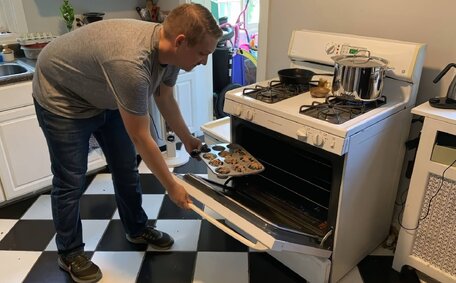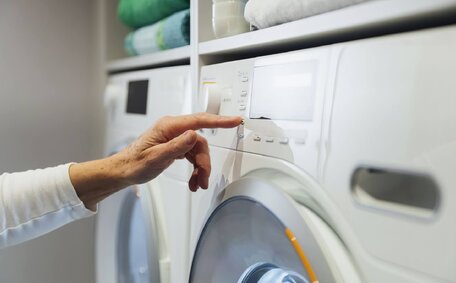Importance of Hiring a Professional for Gas Appliance Installation
Installing gas appliances in your home is not a DIY project. There are serious risks involved if gas appliances are not properly installed by licenced professionals. At Erskine Park Plumbing, our experienced and licenced gas fitters can safely handle all your gas appliance installations.
Attempting to install a gas stove, hot water system, or other gas appliances without training can lead to dangerous gas leaks, fire hazards, or even explosions. Gas fittings require specialised skills, knowledge and tools. Improper installation puts your home and family at risk.
Our Master Plumbers are fully qualified and licenced to install, repair and service all gas appliances. We follow all required safety procedures and standards. Our gas fitters are trained to properly seal fittings, check for leaks and issue compliance certificates.
Installing gas appliances yourself also voids manufacturer warranties. Don’t risk voiding the warranty on a new appliance by handling the installation incorrectly. Our technicians will install your appliance to code and provide all necessary paperwork.
For new gas appliance installation or when replacing an existing appliance, trust our team at Erskine Park Plumbing. We want to keep your home and family safe. Don’t take risks - let the professionals handle your gas appliance installation.
Safety Checks and Procedures for DIY Installation
While we strongly advise hiring a professional, if you plan on installing a gas appliance yourself, there are important safety procedures that must be followed.
Gas appliances require an adequate gas supply and ventilation. Prior to installation, check that your gas line is the proper size and material for the BTU rating of the appliance. Ensure all fittings are the correct type for gas.
The appliance must be installed in a well-ventilated area and with proper clearance from combustible surfaces as per the manufacturer’s specifications.
Carefully read the installation manual. Use all required components like shutoff valves, unions, sediment traps, pipe sealant etc. Wrap all male threaded fittings with teflon tape.
When connecting to the gas supply line, use the appropriate fittings and tighten all connections securely with a pipe wrench. Do not over tighten. Check for leaks by applying leak detector solution.
Obtain a compliance certificate from a licenced technician prior to using the appliance. Improper installation can allow dangerous gas leaks or carbon monoxide poisoning.
DIY gas fitting risks fire, explosion and voided warranties. For your safety, have a licenced professional check your work.
Required Tools and Materials
Installing a gas stove requires having the right tools and materials on hand. Here are some of the essential items you’ll need:
- Pipe wrenches - To secure gas line fittings and valves
- Adjustable wrenches - For tightening nuts and fittings
- Teflon tape - To wrap around pipe threads to seal connections
- Pipe joint compound - Used with Teflon tape to enhance the seal
- Leak detector solution - Applied after installation to check for leaks
- Flexible gas line connector - Used for connecting the stove to the gas supply line
- Flare union fittings - For joining the flexible gas line to the rigid gas pipes
- Shutoff valve - Installed before the flexible gas connector
- Sediment trap - Installed at the end of the gas supply line
- Use only approved gas pipes, fittings, sealants and components intended for gas.
Having high quality tools and materials designed for gas fitting helps ensure the appliance is installed safely and correctly. Do not improvise with parts not approved for gas. Hire a professional if you lack the proper equipment.
Step-by-Step Guide to Installing a Gas Stove
p>p>p>p>p>p>
Ensuring Proper Ventilation and Clearances
Proper ventilation and clearances are critical when installing a gas stove. Gas appliances consume oxygen and release carbon monoxide, so adequate airflow is required to allow fresh air intake and dangerous gas exhaust.
Gas stoves must be installed with the minimum clearance distances from combustible surfaces as specified by the manufacturer and local building codes. Typical clearance distances range from 30 to 45 cm on each side, 10 to 15 cm at the rear, and 2.5 cm above the cooktop.
The stove should be positioned with open areas around it for ventilation. Do not obstruct the flow of combustion and ventilation air. Avoid installing the stove in corners, alcoves or against walls where air circulation is restricted.
Vented range hoods help remove contaminants and must meet local ducting requirements. Downdraft or recirculating range hoods may also be options in some cases. Proper venting to the outside is critical.
Neglecting clearance and ventilation requirements risks dangerous gas buildup and carbon monoxide poisoning. When installing your new gas stove, carefully follow the manufacturer’s specifications and consult local building codes for minimum clearance and venting needs.
Checking for Gas Leaks
p>p>p>p>p>p>p>p>p>p>
Obtaining Certificates and Permits
Installing or modifying gas appliances requires obtaining proper certificates and permits. This critical paperwork validates your gas installation was performed to code by qualified professionals.
A licenced plumber must issue a compliance certificate any time a gas appliance is installed, relocated or replaced, or gas pipework is modified. This gas certification verifies that the appliance is properly installed, safe to operate, and leaks were checked.
The compliance certificate will need to be shown to your gas provider before they reconnect supply. It may also be required for insurance purposes or if you sell the property.
A permit from your local council may be needed for the installation. Your plumber can advise if a permit is required based on where you live and the type of work being done.
Attempting to bypass permits and compliance certificates risks fines, voided insurance claims and even prosecution if an incident occurs. As a licenced plumbing company, we handle all required documentation.
For your safety and peace of mind, our gas fitters will take care of all certificates, permits and paperwork. We want to ensure your gas installation meets the highest standards and all legal requirements.
FAQs About Gas Appliance Installation
Installing new gas appliances or making modifications to your gas supply can raise many questions. Here are answers to some frequently asked questions about gas appliance installation:
Why do I need a professional for gas appliance installation?Gas appliances involve serious safety risks if not installed correctly. Gas fitters have extensive training and knowledge of gas codes and standards to ensure appliances are installed safely with no leaks. DIY gas fitting risks fires, explosions and voided warranties.
What are the risks of a DIY gas appliance installation?Without proper skills and equipment, DIY gas appliance installations risk dangerous gas leaks, fires, explosions and carbon monoxide poisoning. You also void manufacturer warranties on new appliances if not installed by a licenced technician.
When do I need a gas certificate of compliance?A certificate of compliance is required whenever a new gas appliance is installed or existing gas pipework or appliances are modified. The certificate verifies professional installation according to all safety standards.
Can I install a gas appliance without a permit?Most areas require a council permit for installing or modifying gas appliances. Installing gas appliances without the proper permits risks fines. Have your gas fitter handle any required permits.
How do I know if my gas line is big enough for an appliance?Check the BTU rating of your appliance and consult with our gas fitters to ensure your gas pipes are adequately sized. Undersized gas lines are a fire hazard.
Where can I find the clearance requirements for my gas stove?Clearance distances from combustible surfaces are listed in the manufacturer’s manual and on the rating plate on the back of the stove. Typical distances are 30-45cm side, 10-15cm rear. Our technicians will handle clearance requirements.
What gas pipe and fittings should I use?






